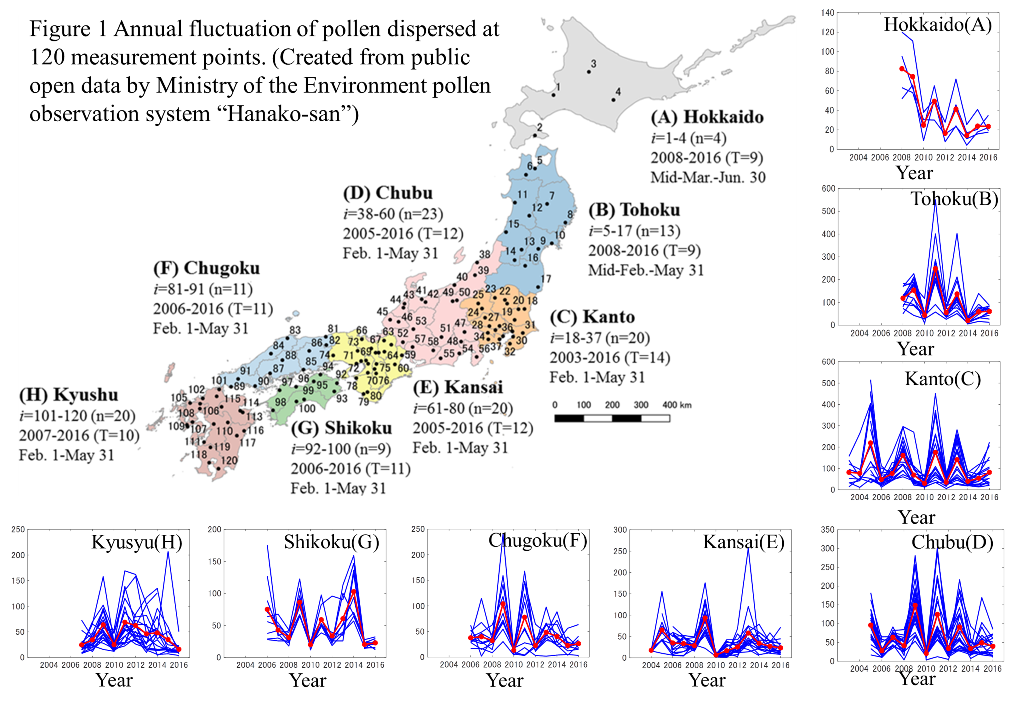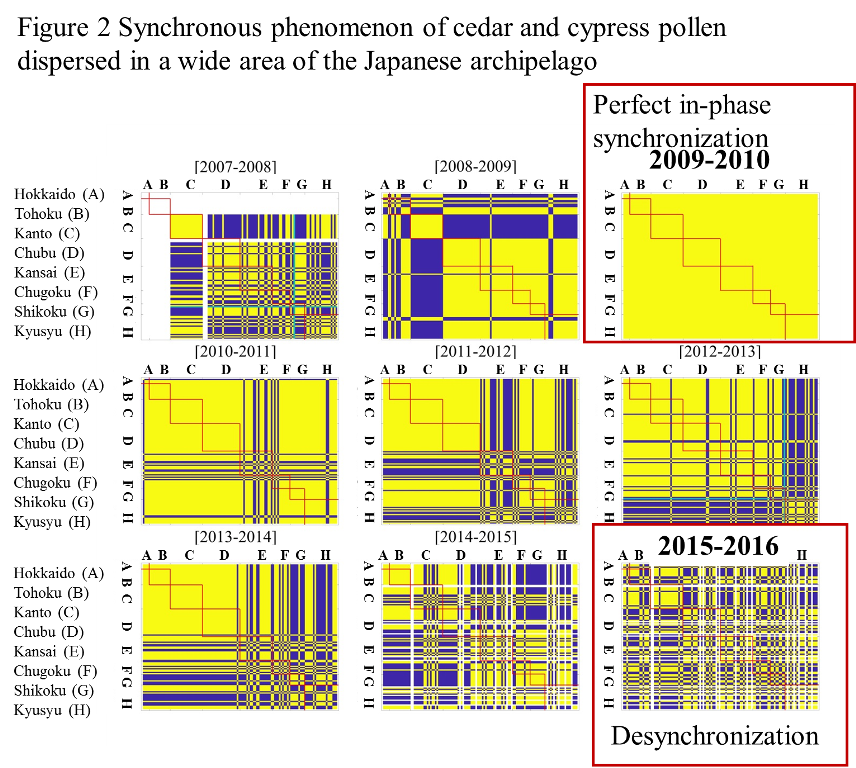Successful visualization of the states of synchronization of the allergic rhinitis (hay fever) causative agent, Japanese cedar and cypress pollen, in the Japanese archipelago
August 21, 2019
A research group at Tokyo University of Agriculture and Technology (Graduate student Akita Ishibashi and Professor Kenshi Sakai) succeeded in visualizing the synchronized state of cedar and cypress pollen, the causative agent of hay fever, in the Japanese archipelago. Using the observation data of 120 places nationwide by the Ministry of the Environment's pollen observation system “Hanako-san”, it focuses only on the fluctuation of pollen amount based on the phase synchronization theory. The method proposed in this study is expected not only to improve the prediction accuracy of pollen scattering, but also to elucidate the reproductive synchronization phenomenon of various plants such as agriculture and forestry, and to visualize the environmental fluctuations in a wide area.
The results of this research were published in Scientific Reports (August 7).
title:Dispersal of allergenic pollen from Cryptomeria japonica and Chamaecyparis obtuse: characteristic annual fluctuation patterns caused by intermittent phase synchronisations
URL:https://www.nature.com/articles/s41598-019-47870-6
DOI: 10.1038/s41598-019-47870-6
Current status
Allergic rhinitis (hay fever) is a problem worldwide. In Japan, cedar and cypress forests account for about 20% of the country due to large-scale reforestation after the war. Therefore, about 17% of the population (over 20 million people) suffer from allergic rhinitis (hay fever) caused by cedar pollen. Timely and accurate pollen prediction is indispensable for hay fever countermeasures. On the other hand, it is known that there is a wide range of complicated synchronization phenomena in tree seed production and pollen production. However, the spatial synchronization pattern of pollen scattering, which is important for accurate prediction of pollen application, has not been clarified yet.
Research group
Professor Sakai's research group, in collaboration with Professor Yoshinobu Hoshino of the Natural Environment Conservation Department, Dr. Prasad of the Astrophysics Department of The University of Delhi and Theoretical Physics Department, conducts interdisciplinary research on various chaotic synchronization phenomena including masting and alternate bearing of perennial plant species.

Research results
The Ministry of the Environment's pollen observation system “Hanako-san” (http://kafun.taiki.go.jp/) has been in operation since 2003, and the pollen quantity observation data at the observation points nationwide excluding Okinawa is available. In this study, we added necessary processing to the public data and used it for analysis. The amount of pollen fluctuates greatly at 120 measurement points

Future development
The method developed this time is a method that can be widely applied to various synchronous phenomena as well as improving the prediction of pollen scattering. We aim to develop as open data science in collaboration with mathematical sciences, such as biennial result prediction of fruit trees, acorn abundance prediction, wild animal damage prediction, and visualization of environmental changes in a wide area.
◆contact◆
Kenshi Sakai,Ph.D
Professor
Environmental & Agricultural Engineering Department
Tokyo University of Agriculture & Technology
+81-42-367-5755
3-5-8 Saiwai-cho,Fuchu,Tokyo,183*8509,Japan
- Japanese trees synchronize allergic pollen release over immense distances(EurekAlert!) (Opens in new window)
